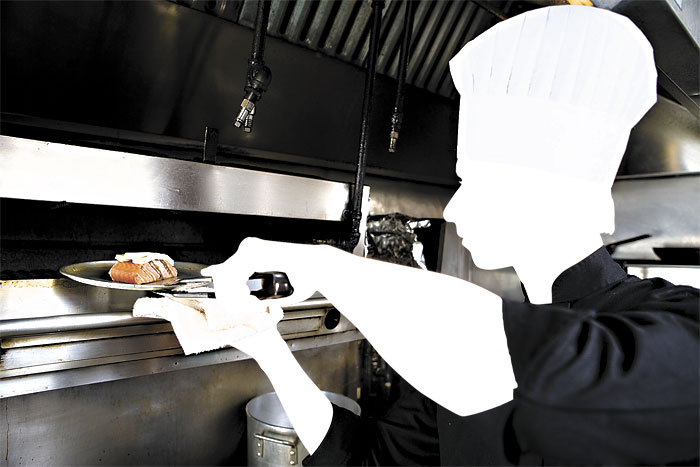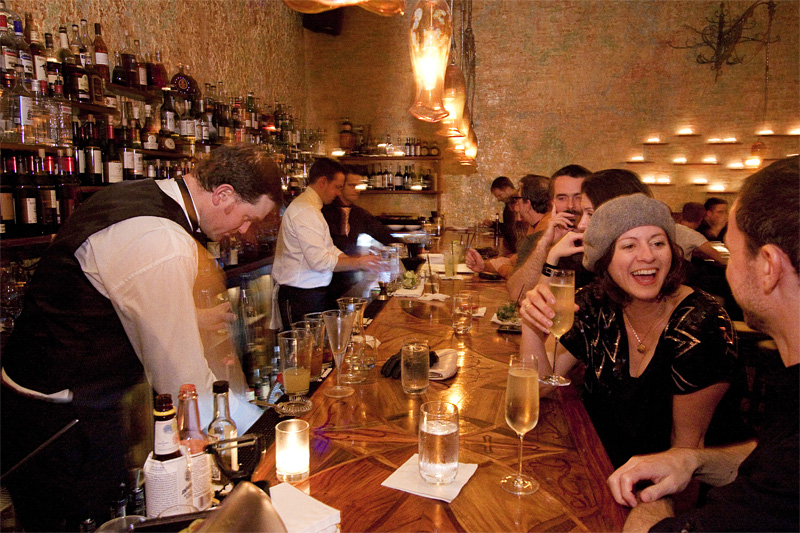Without delving into cheerleaderdom, I have to say that Seattle is an exciting place to be a restaurant critic right now. Over the past year, so many restaurants of such high quality have opened that the list of must-try places I talk up to out-of-town critics and food-snob friends has doubled.
Yet as the Dow Jones is showing us once again, there’s a risk to exuberant expansion. And as I look over my tall stack of press releases for high-end restaurants opening in the region, I’m concerned we’ve headed into a bubble. Unlike the dot-com and housing bubbles, though, money’s not the issue. Certainly Seattle’s high minimum wage, rents, and food costs—not to mention energy costs—keep profit margins tight for restaurateurs. And as the economy keeps slowing, prospective diners are cutting back on extras like dining out, and many restaurants are tightening their belts.
That said, the Puget Sound region doesn’t seem to be in danger of running out of the financial resources to support the growth of high-end restaurants. Nor do we lack for high-quality ingredients or enthusiasm from the public.
There’s just one resource that’s not keeping pace with the boom: talent.
Heard anything about Seattle’s line-cook shortage? Anyone in the industry has. It’s hitting hardest the restaurants that critics rave about. “I think the issue has been building over the last five years,” says Eric Tanaka, corporate executive chef at Tom Douglas Restaurants. “But there are really more restaurants now, and the work pool hasn’t increased as much. When we opened Etta’s 13–14 years ago, we had 200 applications for employment in the first two days. If we [Tom Douglas Restaurants, which employs 50 or so cooks in all] get that in half a year now, we’re lucky.”
“It’s not a lack of cooks, but a lack of talented, good cooks,” adds Brandon Gillespie, owner of Beato.
Chefs who post for line-cook positions say that they’re barely getting any response, and the résumés they see come from career-changers or cooks with short-order experience—not men and women who can pan-sear scallops without overcooking them, transform pigeon bones into a squab jus, and produce a creamy, al dente risotto on command. Gillespie says that the inability to find a well-trained line cook left his existing kitchen staff working six-day weeks for six months, and eventually resulted in him cutting down his hours to five days a week.
New restaurants, which don’t have established reputations to attract ambitious chefs, are particularly hard-pressed. For instance, Mark Fuller, owner of West Seattle’s Spring Hill, opened his restaurant with only his sous-chef in place, borrowing cooks from other kitchens until he could scrape together a full crew days after customers started coming in. Other newcomers report rapidly cycling through cooks in their opening months until they could come up with a kitchen staff who met their standards. “Any decent cook can walk into a decent restaurant and get a job,” Fuller says. Another effect that he, like many Seattle chefs, knows well: Cooks here demand—and receive—higher wages.
The cook shortage is almost entirely attributable to growing pains. “Seattle doesn’t have the historical culinary roots that places like New York, San Francisco, and Boston have,” says Scott Staples, owner of the eight-year old Zoe and the one-year-old Quinn’s Pub, who’s definitely felt the labor crunch. “Seattle has a ton of restaurants, but really, how many of them have great classic French technique driving their kitchen?”
The “French” skills Staples and Gillespie are referring to—slicing and mincing, braising and frying, sauce-making and flavor-building—form the basis of American high cuisine. And Seattle isn’t yet attracting classically-trained cooks the way New York, San Francisco, and Chicago are.
The positions that Seattle restaurants are finding the hardest to fill are in the second tier in the kitchen hierarchy. The chef may be the creative spirit behind the restaurant, but underneath him or her are the sous-chefs and senior line cooks who train the junior cooks on their stations, take charge of the trickiest elements of a dish, and inspect every plate that goes out. They’re the ones who ensure the consistency of the food. And consistency is the name of the game.
As Tamara Murphy of Brasa puts it, “Your restaurant is only as good as the last dish you put up in the window and only as good as your worst cook.” This maxim is even truer in the days of Yelp and City-search, where every diner has the opportunity to be a published critic.
So why is the shortage so acute right now? “I think you have a lot of talented people who have been around, filling the lines, and are finally at the point that they can take on their [own] restaurant,” says Gillespie. He cites Ashley Merriman of Branzino and Dana Tough of Spur, both Maria Hines protégés who’ve just moved up.
Reason two is expansion: For example, Staples now has two restaurants instead of one, Ethan Stowell jumped from one restaurant to three in 18 months, and Eric Banh just opened a second Monsoon in Bellevue. A third factor is the arrival of more premium hotels—such as the Arctic Club (whose restaurant is Juno) and the downtown Four Seasons (with the ART Restaurant and Lounge, to be run by Cascadia’s Kerry Sear)—which require huge staffs and often pay more than bistros do.
Why does this matter to the average diner, especially in an environment in which critics like me are finding so much to rave about? I predict that we’re soon going to find there’s a limit to how fast and far our dining scene can expand. There are a lot of restaurants with talented chefs and creative menus coming into the market—restaurants whose quality compares favorably to other restaurants around the nation, not just around Seattle.
What’s going to start showing itself soon is how many of them can sustain that level of quality. Restaurants can’t keep innovating if their kitchens are understaffed or inexperienced. As Murphy puts it, “You can have all these great ideas and this great food, but if the cooks can’t execute it…you’re always adjusting the menu to the level of your cooks.”
I think, however, that three factors may ameliorate the cook shortage. The first is exponential growth: More restaurants with more experienced chefs will produce more good line cooks at a faster rate. I also take heart in the fact that the national food media have been showing Seattle’s restaurants and farmers markets more and more love. The more this city gets a reputation for its food scene, the more we’ll attract trained, driven cooks who want to be part of it. And if there’s a silver lining to the current economic slowdown, it’s the Milton Friedman–inspired hope that the market will out: that Seattle diners who expect their food to be higher-quality will weed out restaurants that don’t produce it, freeing up senior line cooks to move on to better kitchens.
But this process takes time. Meanwhile, every time I hear about some fancy new restaurant opening, I worry: What restaurants is it pulling its staff from—and are my favorite places going to go downhill as a result?






